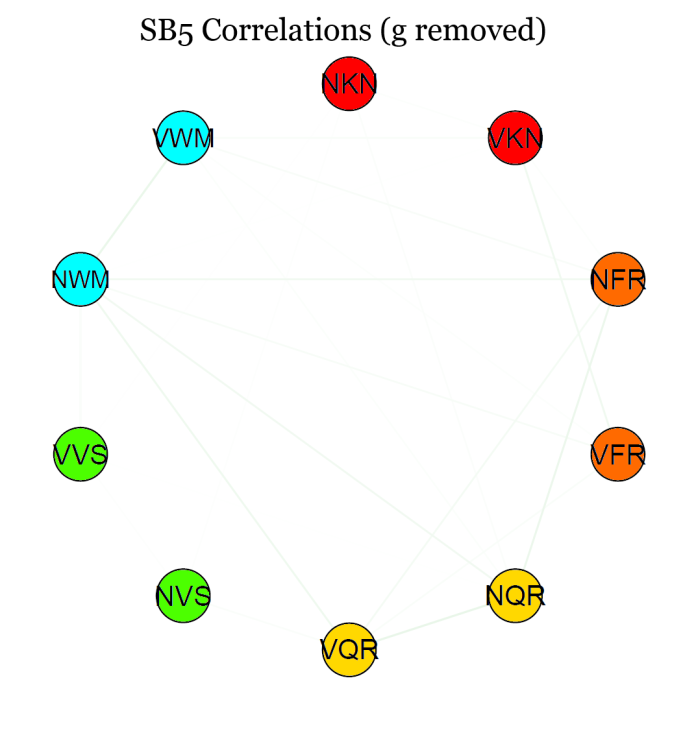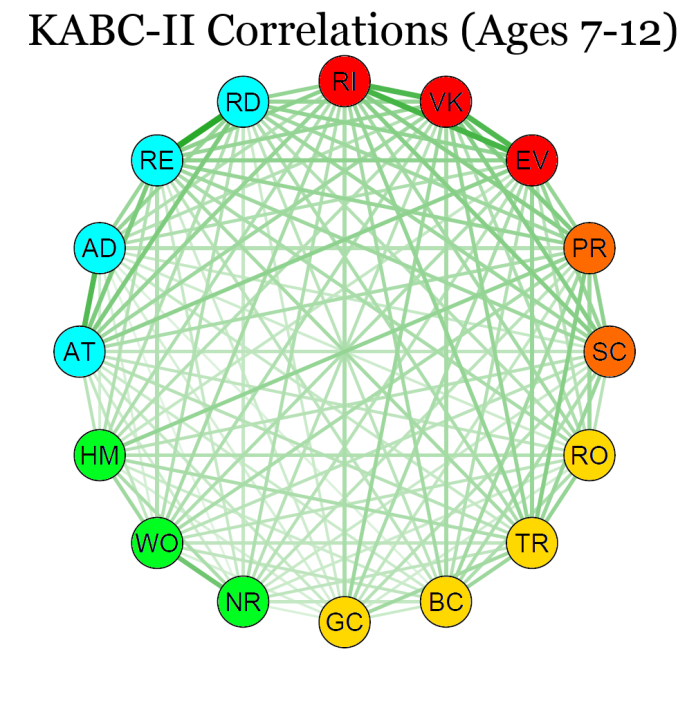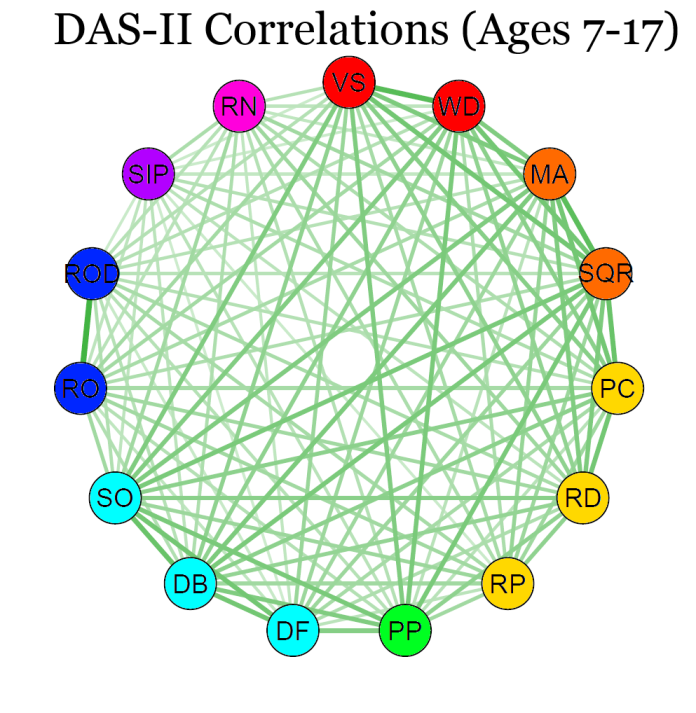I have many reservations about this model of cognitive predictors of academic abilities that I presented at APA today (along with co-presenters Lee Affrunti, Renée Tobin, and Kimberley Collins) but I think that it illustrates an important point: prediction and explanation of cognitive and academic abilities is so complex that it is impossible to do in one’s head. Eyeballing scores and making pronouncements is not likely to be accurate and will result in misinterpretations. We need good software that can manage the complex calculations for us. We can still think creatively in the diagnostic process but the creativity must be grounded in realistic probabilities.
The images from the poster are from a single exploratory model based on a clinical sample of 865 college students. The model was so big and complex I had to split the path diagram into two images:

Exploratory Model of WAIS and WJ III cognitive subtests. Gc = Comprehension/Knowledge, Ga = Auditory processing, Gv = Visual processing, Gl = Long-term memory: Learning, Gr = Long-term memory: Retrieval speed, Gs = Processing speed, MS = Memory span, Gwm = Working memory capacity, g = Anyone’s guess












